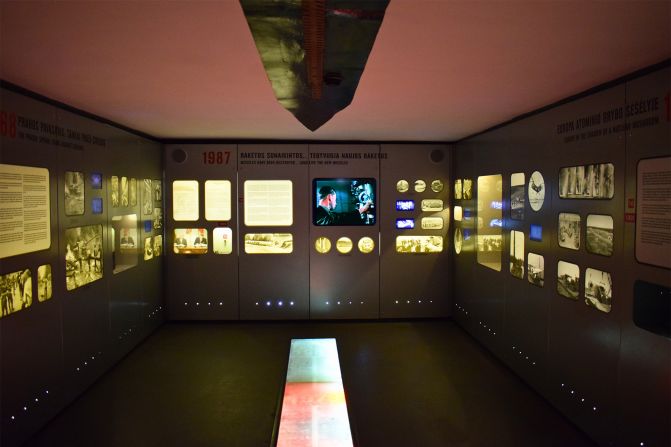In the heart of Lithuania’s Žemaitija National Park lies the remnants of a once-secret nuclear missile base, now transformed into the Cold War Museum. The Plokštinė Missile Base, which operated during the height of the Cold War, draws approximately 35,000 visitors annually, eager to explore its eerie underground facilities.
Located about 30 miles inland from the Black Sea, the site is surrounded by a stunning landscape of birch trees and Baltic pines. The peaceful surroundings contrast sharply with its historical function, where Soviet missile operators prepared for potential conflict with Western Europe. The base’s four distinctive white domes, now a prominent feature of the landscape, once housed weapons poised for destruction.
The Historical Significance of Plokštinė
Constructed between 1960 and 1962, the Plokštinė Missile Base was a strategic asset for the Soviet Union, located in a region ideal for military operations against NATO countries. The dense forests and remote location provided the necessary cover for such a sensitive installation. The base was completed with the labor of over 10,000 workers from various Soviet republics, a massive undertaking that did not escape the notice of local residents.
Aušra Brazdeikytė, a guide at the Cold War Museum, recalls the atmosphere of secrecy that enveloped the area during that time. “People didn’t know what kind of weapons were stored there, but we knew about this place,” she explains, reflecting on her childhood near the base. The heavy military presence and transportation of equipment were part of everyday life, yet discussions about military matters were avoided due to the risks involved.
The base remained undiscovered by U.S. intelligence until 1978, when satellite reconnaissance finally revealed its existence. By that time, however, the facility had already been decommissioned in accordance with arms control agreements between the United States and the Soviet Union.
A Journey Underground
Visitors to the Cold War Museum enter the facility through a subterranean entrance, marked by a sign in Russian that reads, “Please, wipe your feet.” This attention to cleanliness reflects the base’s operational history, which included a sophisticated underground command center and a network of corridors connecting various sections of the facility.
The Plokštinė base was equipped with four 100-foot launch silos for R-12 Dvina missiles, alongside a subterranean power plant designed to ensure continuous operations. Following Lithuania’s independence from the Soviet Union in 1990, the base fell into disrepair and was subject to looting.
In 2012, local officials, with the aid of EU funding, transformed the site into a museum, allowing the public to access its command center, electric plant, and one of the silos. The dimly lit corridors, filled with remnants of Soviet history, create an unsettling atmosphere. Visitors encounter statues of Lenin and Stalin, military awards, and artifacts from the Cold War era, providing a glimpse into a turbulent period of history.
While the base never launched missiles, it has been the site of accidents. Brazdeikytė recounts a tragic incident where a soldier fell to his death during maintenance work and two others died from an accidental nitric acid spill.
The nearby ghost town, which once housed approximately 300 personnel, adds another layer of intrigue to the area. Following the base’s decommissioning, some buildings were repurposed as a children’s summer camp, operating from 1979 to 1990. Today, the town lies largely abandoned, with remnants of storage hangars gradually being reclaimed by nature.
The juxtaposition of the stark military past against the beauty of Žemaitija National Park symbolizes Lithuania’s resilience. The region, now known for its scenic landscapes and rich cultural heritage, invites exploration beyond the confines of the missile base.
Visitors can indulge in local delicacies such as žemaičių blynai (potato pancakes) and cepelinai (dumplings), while the nearby town of Plateliai offers historical attractions, including the Church of Apostles Peter and Paul and a Mardi Gras Museum.
Today, the Plokštinė Missile Base stands as a powerful reminder of Lithuania’s complex history and transformation. From a secret military installation to a public museum, it offers an educational experience that reflects on the past while celebrating the natural beauty of the region.
